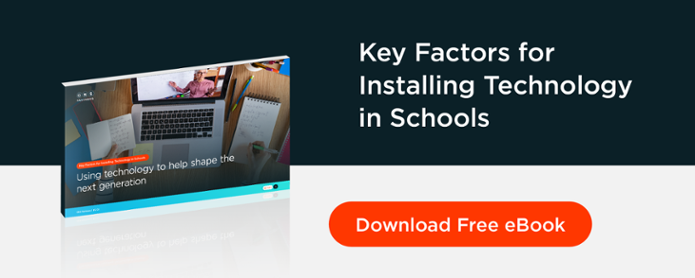
The Internet is becoming increasingly widespread and important in day-to-day life. People communicate through phones and computers; most writing requires proficiency with Microsoft Word; research and educational materials are shifting to online databases. Schools need affordable technology in the classroom. But as technology becomes more and more integrated in our world, some schools are struggling to keep up.
The Digital Divide
It’s clear that technology holds many possibilities for learning, providing endless resources for teachers and students. Unfortunately, that doesn’t mean it’s accessible to everyone. The digital divide is a term that refers to the gap between people who can use the computer and Internet and people who can’t. This gap is especially prevalent between well-funded and under-funded K-12 schools. According to a study conducted by the National Center for Education Statistics, almost every school in the U.S. has a computer with Internet access, with an average ratio of 3 students per computer. But additional studies show that this ratio gets much higher in low-income schools. Students who attend schools with lower budgets often have to share one computer with many classmates, while also struggling with a poor Internet connection and slow hard drives. If this digital divide gets bigger, these students will continue to fall behind with critical 21st century technological skills. And this has potentially huge consequences, given that 70% of jobs require good computer skills. So what are these schools to do?

- Look into integrating a strong infrastructure for your school. In order for technology to run properly for a lot of devices, you need to ensure that your infrastructure is strong. By purchasing fast, reliable Wifi, more robust cabling for access points, and servers to store and back up data, technology can be seamlessly integrated into schools and their curriculums. This will ensure that schools won’t have to waste time troubleshooting finicky technology, while their students fall farther behind. Teachers will be free to easily incorporate the Internet and digital skills into their lessons.
- Invest now, save later. Not only will purchasing a strong technological infrastructure save precious learning time; it will also save schools money. Yes, investing in infrastructure will be very expensive in the beginning. But if you try to choose the cheapest options when it comes to technology and Wifi—especially when dealing with a big building and a lot of tech users—you’ll end up needing to pay much more later when you need to fix a slow Wifi connection, or if you lose all of your files because you didn’t invest in a server. If you invest upfront, the rest of the technological implementation will be smooth.
- Try eRate. When investing is clearly such an important part of affordable technology, how can underfunded schools actually afford it? The answer to this is relatively simple.
What is eRate?
eRate is a program that was established by the Federal Government to connect K-12 schools and libraries to the Internet and its limitless resources. It can fund schools to help build their networks and infrastructures so they can better support their students through technology. Though eRate does not fund user devices such as laptops or tablets, they do fund crucial, and very pricey network-related items that schools need in order for their technology to run smoothly and effectively.
This program was established so that the Internet could be made available to everyone, to all types of schools and students. It’s a great opportunity for schools that are struggling to include technology in their budgets but want to take advantage of technology as a learning tool. Schools can apply annually for funding and they will receive subsidized money and then an independent contractor to help install the infrastructure.
Technology can be daunting, especially financially, but this process is actually quite simple. Many schools lacking funds have balked at the prices of strong infrastructure and have had to make a choice: no technology at all, or settling for slow and outdated technology instead. Ultimately, this wastes the school’s time and money. But now, there’s a new option: investing in important, strong infrastructure by applying for eRate to receive government funding. Through eRate, schools have the power to bring incredible resources and skills to their students, improving their learning and their futures.
Technology has the potential to be a great equalizer. There are so many learning tools and experiences available online that can provide every type of student with a robust education. The only thing that prevents this equity is affordability; but through eRate, that no longer has to be a problem.
There are means to acquire the right technology for your school, no matter your budget, and we are here to help. Learn how you can implement modern technology in your classroom with our Educational IT Services. We help educators find affordable solutions to augment teaching in their classrooms.



